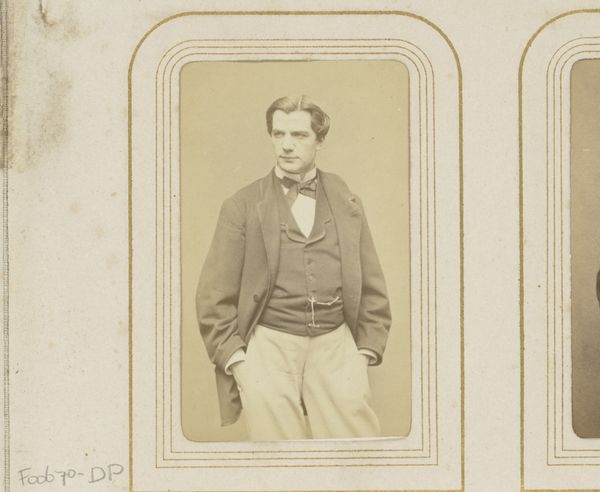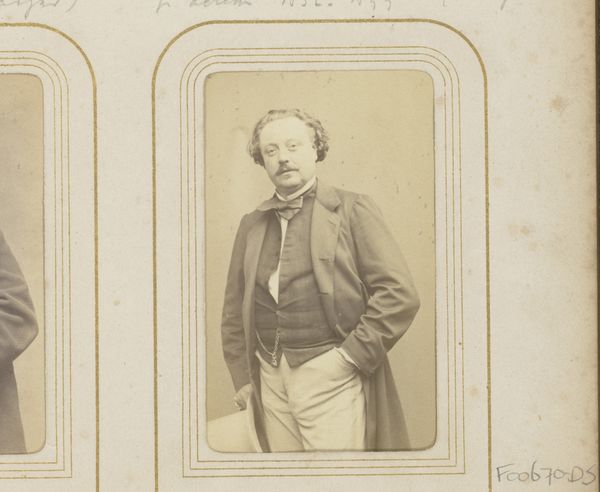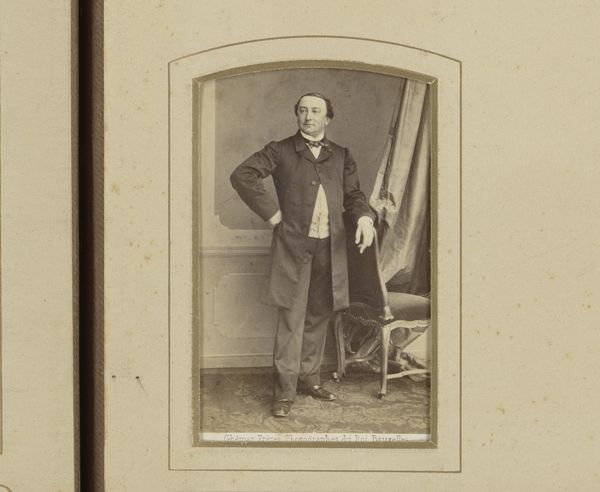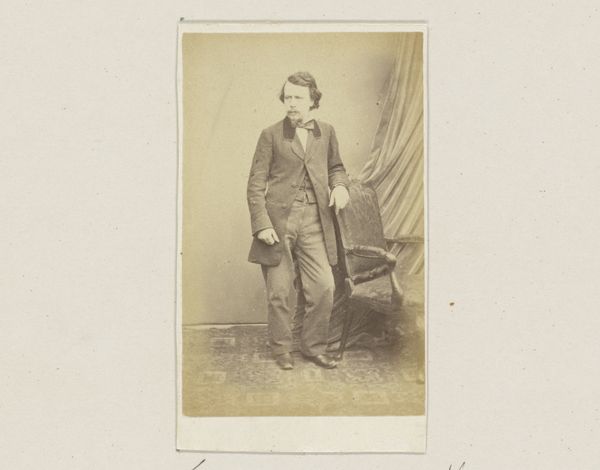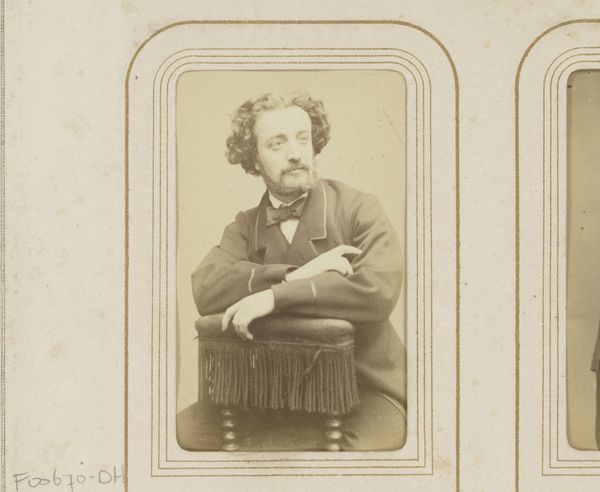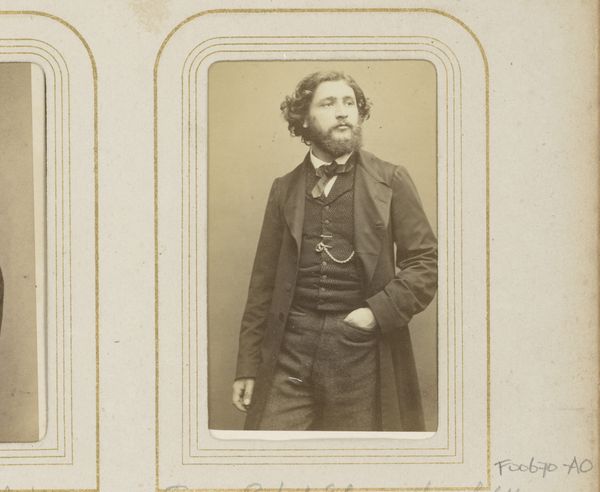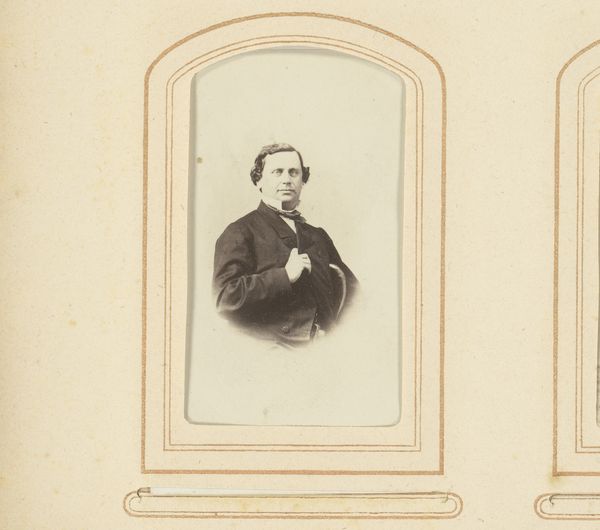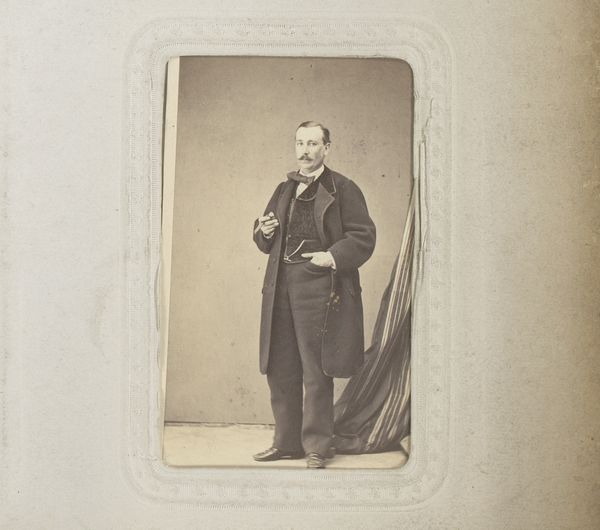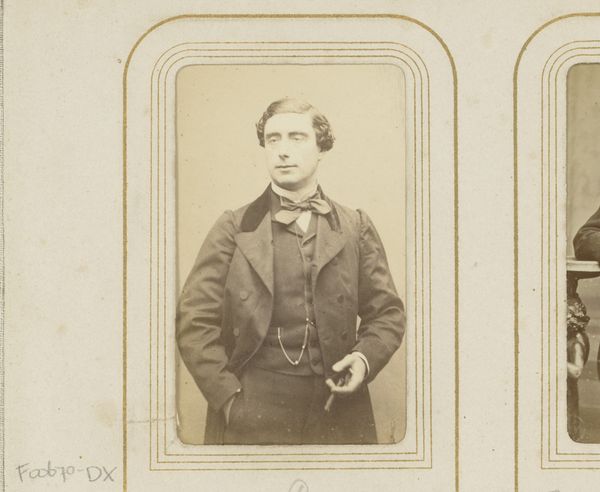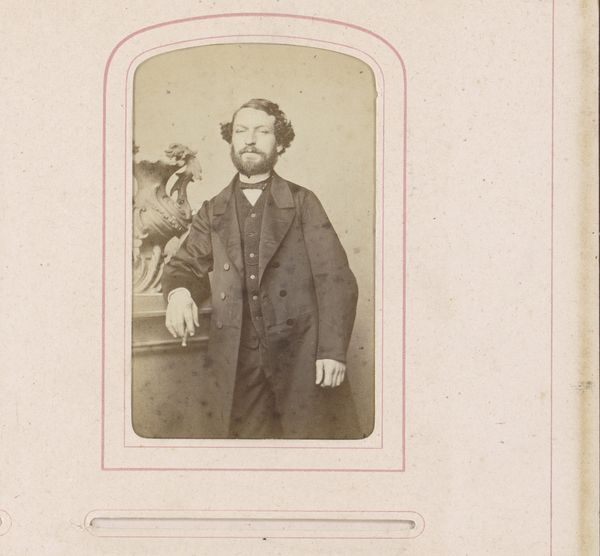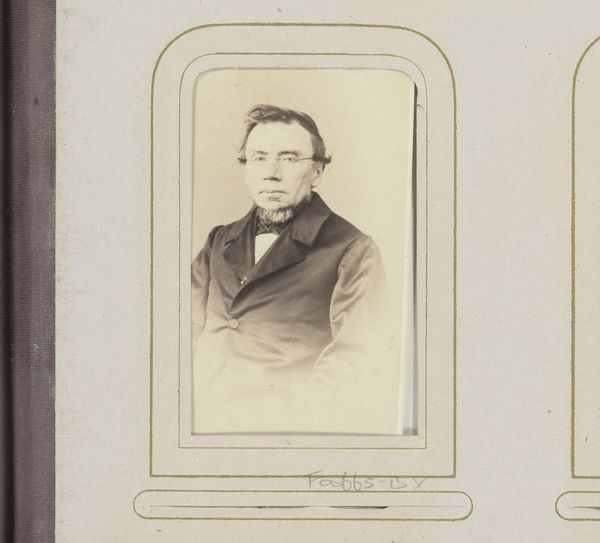
photography, gelatin-silver-print
#
portrait
#
photography
#
historical photography
#
gelatin-silver-print
#
19th century
Dimensions: height 84 mm, width 51 mm
Copyright: Rijks Museum: Open Domain
This is a photograph of René Luguet, made by Georges Mathurin Legé, using the 19th-century photographic technique of albumen print. The image's sepia tones arise from the chemical reaction between the paper fibers and the silver particles in the emulsion. The albumen printing process was complex, and relied on egg whites to bind the photosensitive chemicals to the paper. This was a laborious, industrial process, involving coating, sensitizing, exposing and developing in a darkroom. The final result is a paper print, which can then be mounted, framed, and sold. The resulting image has a distinctive, slightly soft focus and warm tone. This gives it a sense of intimacy, appropriate for portraiture. But the very nature of the photographic process also made images reproducible and affordable, opening up portraiture to a wider social class. So, next time you look at an early photograph, remember that it is not just an image, but also the result of industrial processes and labor. The interplay of science and art, consumption and creativity, means that it occupies a space between high art and craft.
Comments
No comments
Be the first to comment and join the conversation on the ultimate creative platform.
